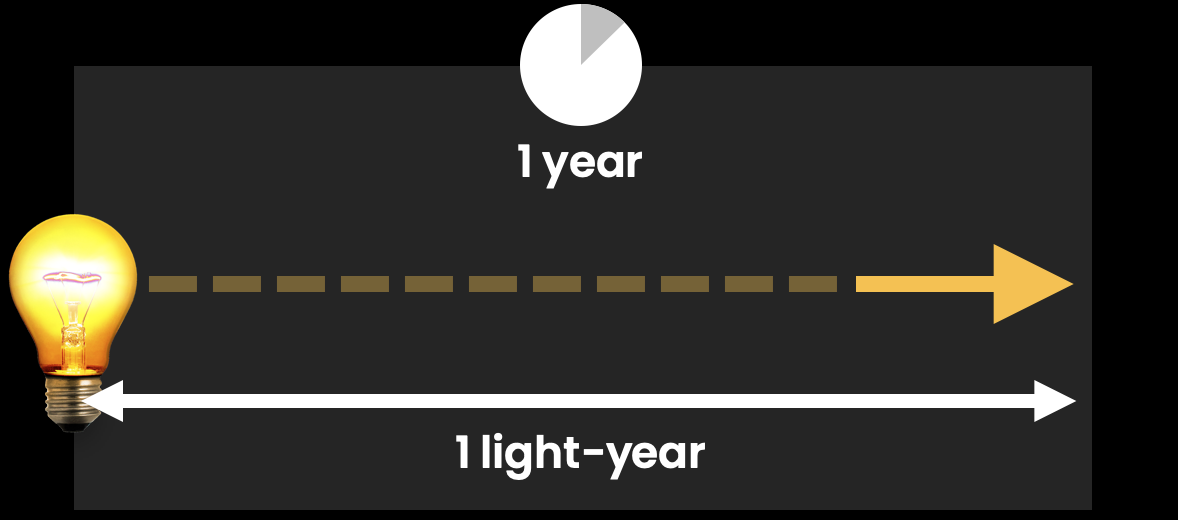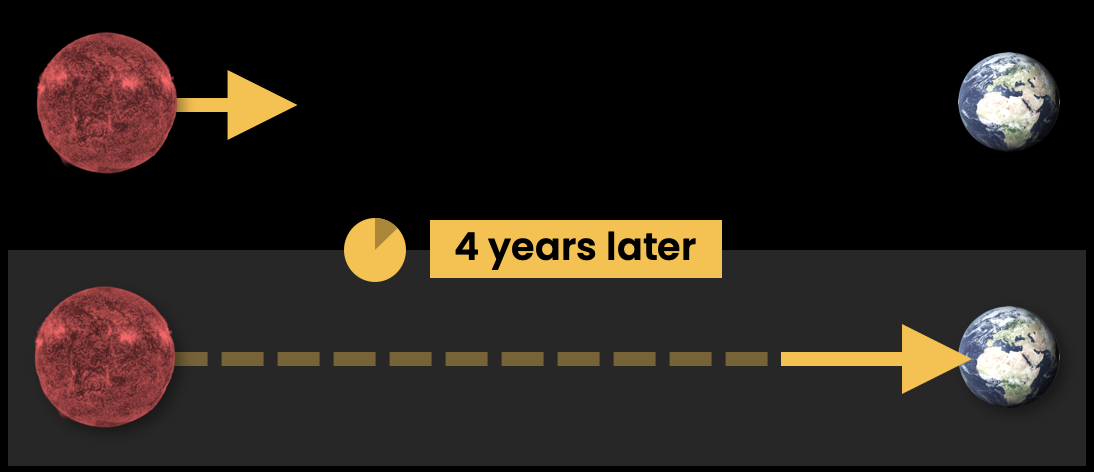Physics
Fox
Summary
- Stars (such as the Sun) are very large balls of hydrogen and helium atoms.

- Because of the extremely high temperatures inside stars, they are able to fuse hydrogen atoms together to form helium atoms. This process creates a lot of light and heat.
- A light-year is how far light moves in one year. This is a very long way!

- The stars we see in the night sky are light-years away from us.
You were right about the stars
Each one is a setting sun
Stars are massive gaseous balls of (mostly) hydrogen and helium atoms, that have come together because of gravity.

Stars are constantly fusing (i.e. combining) hydrogen atoms together, forming helium atoms. This process gives off lots of light, which is why stars are very bright!

Though a star’s surface is very hot (often a few thousand °C), this is very chilly compared to the millions of degrees found inside stars! Stars wouldn’t be able to fuse hydrogen if they weren’t this hot inside.
We have previously learnt that light is outrageously fast.
But is it really?
Context matters a lot. For example, £1000 might sound like a lot of money to you, but to the Zucc it's just a drop in the ocean.

Speaking of aliens, in outer space distances are astronomical — it takes light a long time to get anywhere. Though it takes light 1 second to reach the moon, it takes 8 minutes to reach the sun, and 4 years to reach our nearest other star!
When thinking about how far away things are in space, we use a unit called a light-year. A light-year is how far light moves in one year.

Note that a light year is a measure of distance (not of time, as many people assume).
So exactly how far is a light year?
Let’s figure it out:
Light moves at a speed of 300 million m/s, and a year is:
(365.25 days) × (24 hours per day) × (60 mins per hour) × (60 seconds per min)
= 31.6 million seconds.
Therefore, in a year, light moves a distance:
distance = speed × time
= (300 million m/s) × (31.6 million seconds)
= 9.5 quadrillion km!
That’s about 450 million Great Walls of China! Or about 63,000 times the distance between the Earth and the Sun.

Our nearest star, Proxima Centauri, is about 4 light years away. This means it takes 4 years for light from this star to reach us. Therefore, when we look at Proxima Centauri, we are actually looking at it how it was 4 years ago. We are looking back in time!

Eta Carinae is one of the furthest stars we can see with the naked eye. This star is about 7,500 light years away.

The two massive clouds surrounding Eta Carinae are the remnants of the star’s explosion (when stars explode, it is called a nova). Many people saw this explosion happen 170 years ago, even though the explosion actually happened 7,500 years before that! (this is ages ago; about 2000 years before Stonehenge was built.)
(Eta Carinae is not actually a single star, but at least two stars which are orbiting each other).
When looking up at the night sky, you might occasionally see a small bright streak across the sky that quickly disappears. This is called a shooting star.

Unlike what the name suggests, shooting stars are not actually stars — they are the same as meteors.
Meteors are rocks from space that heat up and glow as they enter Earth’s atmosphere. This glow is what leaves a pretty streak in the sky as they come to Earth. Most meteors are only the size of a grain of sand!
At certain times of the year, many meteors come down in rapid succession. These events are known as a meteor showers.

A meteor shower occurs because a comet has previously left tiny pieces of rock within the path of Earth’s orbit. Since the Earth completes one orbit per year, it passes through these rocks at roughly the same time each year!
When we look at the sky at night, it looks like we’re at the centre of a big ball, and that the stars are stuck to the inside of the ball. This ball is known as the celestial sphere.

The celestial sphere is very noticeable when watching timelapses of the night sky, as the ball appears to spin around us:

The celestial sphere doesn’t actually exist. It’s a kind-of optical illusion, like this warped floor that’s actually a flat (painted) floor:

This illusion happens because the stars are so far away from us that they all look like tiny points in the sky. In our heads, we have no way of knowing how far away each star is, so we imagine them as being equally far away.
In the timelapse above, the sphere appears to spin because the Earth is spinning!
Astronomers (people who study the stars and planets) like to use the celestial sphere as a map of the night sky. This is used in the same way as you might use a globe.
Many ancient Greeks believed the celestial sphere to be a real sphere at the edge of the Universe, with the Earth at the centre of the Universe. These ideas were believed in Europe for the next 2000 years!

Congratulations!
6 of 6 questions completed
+ ⭐️ collected.
Sign up (for free!) to:
• save your progress 📊
• create constellations✨
• customise your fox! 🦊







